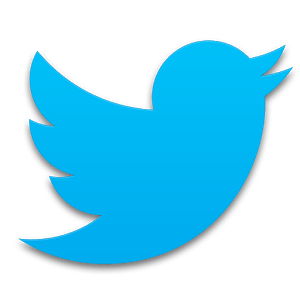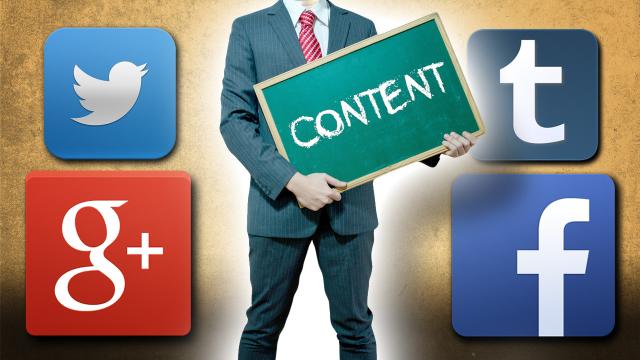Dear Lifehacker, I know a bit about all the different social networks out there, but I don’t want to keep up with a separate profile for all of them. Which ones should I use and which ones can I ignore? Thanks, Broken Social Network Scene
Dear Social,
The last time we tackled this issue, the social networking world was quite different. Google Buzz was still a thing, Instagram was eight months away from existing, and the mobile revolution was still in its glory days. Things have changed.
This is part of the social network world so you should keep that in mind when choosing a service. We use these apps and sites because we like the communities that surround them, so they will inevitably change. We’ll look at which service is good for what type of content and activity here in 2013, but as with anything on the internet, don’t count on it to stay that way forever.

What it’s good for: Family photos and videos, personal updates, chronicling life changes, and sharing interesting links.
Where it falls short: Up-to-the-minute news, one-way follows for individuals.
When Facebook introduced its new Timeline profile layout, the site became a sort of personal scrapbook that allows you to record everything that happens to you. The site also has over a billion users worldwide, which overshadows the user base of every other network on this list. If you know a person’s name, chances are you can connect with them on Facebook.
Sharing all of your personal life events, updates and photos is great, but don’t expect to amass much of a “following” per se. Facebook added one-way follow functionality without creating a page around the time Google+ came out, but adoption is a little scattershot.
Google+

What it’s good for: One-way following, photography, videos, long-form text content, selective sharing, and animated GIFs.
Where it falls short: Sharing with friends and family, and fast news.
Google+ is a relative newcomer to the field. It was first introduced a couple years ago, yet by some accounts, it has already outpaced Twitter to be the second largest social networks. (How active those users are is more debatable.) The strongest feature is the site’s powerful tools for organising your contacts and controlling what shows up in your feed.
Unlike most other services, you can’t add people without sorting them into some category. You’re given a few by default, but you can also create them on the fly. This means that, from the start, you’re already approaching your follow lists as though some feeds have more priority than others (which they do). If you’re looking to carefully curate a casual feed, Google+ is the way to go.
It has also done a fine job of attracting a lot of visual content producers with its big, attention-grabbing posts. Photography, videos, artwork, and basic blog-style posts with some conditional formatting all regularly show up in seasoned Google+ veterans’ feeds. There are also communities for tech-friendly topics such as Raspberry Pi or system builders. If you do something creative or are involved in tech, you can probably find a community for you.

What it’s good for: Instant news, site updates, breaking news, and quick links.
Where it falls short: Long-form anything and reading everything in your feed.
Twitter is the odd-man out in social networks because it’s defined less by what it is and more by what it isn’t. Twitter uses a 140-character limit to make messages readable on as many mediums as possible without getting bogged down by bandwidth or device constraints. While most clients will show photos, videos, and article snippets inline, tweets can be accessed on phones with nothing more sophisticated than SMS capabilities.
Twitter also uses a real-time display of information. Unlike Facebook or Google+, every person you follow and everything they tweet is given equal priority. If you follow a couple of hundred users, then you’ll see reactions as they happen. This makes it perfect for anything happening live. Informal reactions to the newest episode of a show, big news occasions (Twitter just loves elections), and sporting events.
It’s also great and simultaneously terrible when breaking news occurs. As the events of the Boston Marathon showed, information can travel very quickly across Twitter, whether it’s verified or not. As one Community writer put it: “Twitter does its best work five minutes after a disaster, and its worst in the twelve hours after that.”
Still, flaws and all, it’s really cool to be able to follow and communicate in some small way with TV show writers, movie stars, journalists, politicians, and fellow lifehackers in a single medium where everyone is equal.
Tumblr

What it’s good for: Focused, social content. Photos, GIFs, blog posts. NSFW content.
Where it falls short: News, connecting with celebrities and sites.
Tumblr has carved out a niche for itself with a greater focus on the content aspects of the service than the social emphasis most other sites take. Perhaps most notably, if you’re used to other blogging services, comments are not enabled by default. You can reblog stuff other people share and add your own captions, but feedback is not generally highlighted as a primary function.
This puts the focus both on the quality of the content itself and sharing it with others. Curation is the name of the game and often a successful Tumblr can be made just by being someone who’s good at finding cool things to click on, no commentary needed. Just be sure to give credit where it’s due. Building a following on the backs of other people’s work without contributing anything of your own or linking back is a great way to breed ill will among the very artists you’re mooching from.
Outside of these main four, there are also specialised networks that are devoted to a certain type of content. Instagram and Vine fall into this category. Unlike other entries on this list, these sites don’t have a wide variety of options for sharing different types of content. If you want to share videos, YouTube is the place to go. For filtered photos, Instagram leads the pack. Snapchat excels at sharing images that you don’t want to save permanently (though you shouldn’t use it to share pictures of a sensitive nature).
Ultimately, while social networks are still proliferating, they’ve moved away from being carbon copies of each other. Facebook is arguably the only one remaining that’s looking to connect you primarily with your friends and family. Google+ wants to connect you with other people across the internet, Twitter wants to connect you with what’s happening right now, and Tumblr wants to connect you with cool stuff. Each niche has its users and, when used appropriately, they can all provide tangible value.
Cheers
Lifehacker
Got your own question you want to put to Lifehacker? Send it using our contact tab on the right.

Comments
12 responses to “Ask LH: Which Social Network Should I Use?”
One thing not mentioned here is the fact that all of these are hosted in the USA, which makes them unusable for anyone concerned about privacy. Facebook and Google are both commercial spy sites, and all US-hosted services are US government spy sites by default. I’ve shifted all my data into Europe and Australia, and would advise everyone to do the same.
Are there any social networks (or component services like chat) hosted outside the US?
See, I couldn’t care less whether The Man knows where I had lunch last weekend or when my birthday is. I don’t have anything to hide, and if I do, I wouldn’t put it on Facebook. And if you’re involved in shady activity, then I hope the authorities use whatever resources are at their disposal, including social networking, to apprehend you.
If you really believe ‘the authorities’ (ie. torture/rendition squads etc that constitute the US) can be trusted to be good judges of what is/isn’t “shady”, then you have very limited experience of the world.
If you’re using social media and uploading your life to the internet – with any expectations of privacy – you’re going to have a bad time.
A bit of a leap from any social media use to ‘uploading your life to the internet’, isn’t it? If I’m going to chat with a group online, I don’t want the logs stored in permanent corporate/government fishing databases, regardless of the nature of what’s being said.
It’s not all-or-nothing, but it’s becoming increasingly clear that the US is a hostile environment for data, and it is thus foolish to leave more there than is necessary. There are few guarantees in life, and none in the internet, but some environments are better than others. That’s all.
Did you get that, America? Bob Bobbings. He’s up to some shady shit.
Tin foil hat?
“I would _strongly_ recommend against anyone trusting their private data to a company with physical ties to the United States.”
http://lavabit.com (an American mail host).
Social media sites are clearly not ‘private data’, but alarm is spreading in the US about government and corporate hostility to the individual.
And another one bites the dust:http://goo.gl/j5pN0c
Actually, you can do one-way follows in facebook. Just no one really uses it — instead of friending, there’s another option on the drop-down for following a user.
The “follow” option on facebook is only worthwhile if the person you are following posts everything as “public”.
If the person posts everything as “friends” or “friends of friends”, you will not see it by following them but only by friending them
Precisely, and if someone intends to have people following a public feed, they’re better off setting up a page for themself rather than posting publicly to an account. Pages can have significantly more followers than accounts can have friends, then just leave the friends list as people you actually know.
I’d like to see a version of this topic covered related to businesses;
My 4 (I chose 4 because of the symmetry) are Twitter, Facebook, Instagram and Pintrest. I hate Pintrest.
I find it hard to get the word out with Facebook and Twitter, but finding your specific market on Instagram is piss-easy. Look up tags of your city, get talking to people, get a follow and they see everything you’re up to from then on.
I like Facebook, but that kind of virality is damn hard and I just don’t get how to market myself on Twitter…any advice welcome!
America is gradually (although probably too late) coming to understand it’s an extremist and militarist security state, with no recourse for the individual: https://lavabit.com. Anyone holding any data there is a fool.